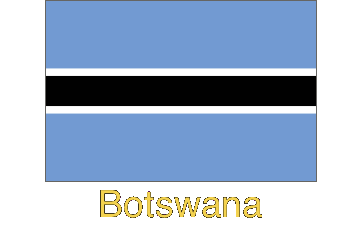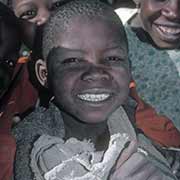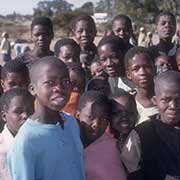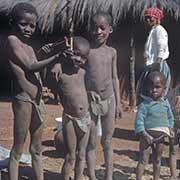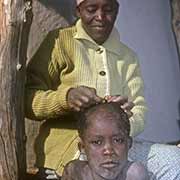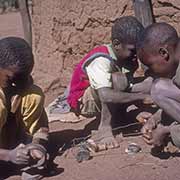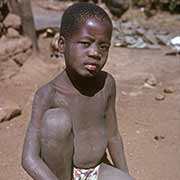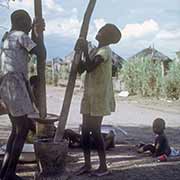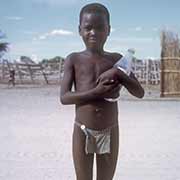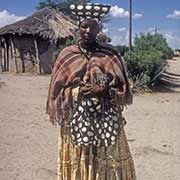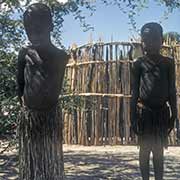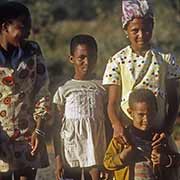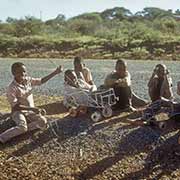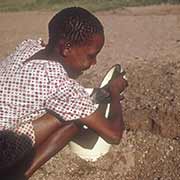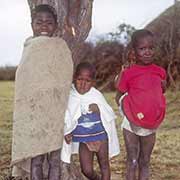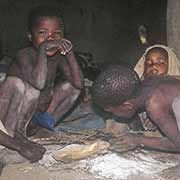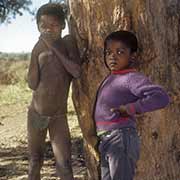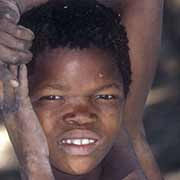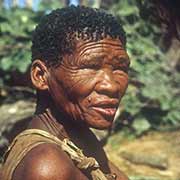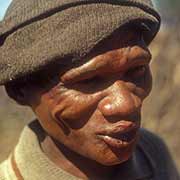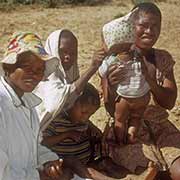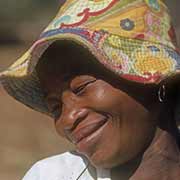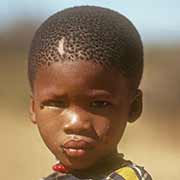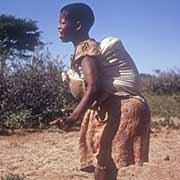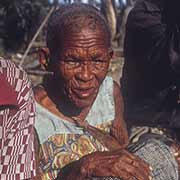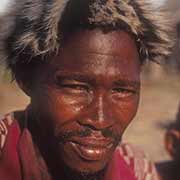Photos of The People of Botswana, Botswana
The People of Botswana
Almost 80% of the people of Botswana are Batswana (singular: Motswana), divided among different tribes that have their areas and villages, like the Bangwaketse in the Southern or Ngwaketse District with its capital in Kanye, the Kweneng District (capital Molepolole), home of the Bakwena, the Kgatleng District, the homeland of the Bakgatla people with its capital of Mochudi and the Central District, the traditional homeland of the Bamangwato people with Serowe as its capital. They speak the national language, Setswana.
you may then send it as a postcard if you wish.
In Maun, on the Okavango Delta in the northwest of the country, live a group of Herero. They are traditional pastoralist people, most of whom live in Namibia, with some also in Angola. They originally lived in Botswana, but most migrated to today’s Namibia during the 17th and 18th centuries. During the late 19th century, when Germany had colonised South West Africa, conflicts erupted between colonists and Herero herders, culminating in the whole-scale slaughter of Herero by the Germans in 1904 - a deliberate attempt at genocide. Before that time, German missionaries had converted the leading Herero group in central Namibia; they abandoned their leather garments. The women adopted the fashions of the German missionary women, the clothing they wear until this day. The Herero in Maun may be descended from survivors of the German campaigns; they were left only a way out into the desert and may have made it to the Okavango Delta.
The Kalahari (usually referred to as a desert, but rather a large semi-arid sandy savanna) is the home of a group of people called Bakgalagadi, who speak a language, called Se-Kgalagadi, distinct from standard Setswana but related to it. They make up about 3% of Botswana’s population. “Kgalagadi” means “a waterless place” in Setswana and is the origin of the word “Kalahari”. They live in Lethlakeng and Khudumelapye, along the road from Molepolole to the Central Kalahari Game Reserve. But the original inhabitants, as of most of southern Africa, are the San (or Bushmen) people, who have lived in the Kalahari for 20,000 years as hunter-gatherers, hunting wild game with bows and poisoned arrows and gathering edible plants, like berries, melons and nuts, as well as insects. They got most of their water from plant roots and desert melons found on or under the desert floor, storing water in the blown-out shells of ostrich eggs. Their ancestors lived initially all over southern Africa with the Khoi peoples, as numerous caves adorned with “Bushman paintings” prove. They speak languages collectively known as Khoisan, distinguished by the great number of clicks in it. They were gradually driven from more fertile lands by migrating Bantu tribes to the wastes of the Kalahari.
The San, historically a derogatory term meaning “people picking things up from the ground”, are called Basarwa by the Tswana, meaning “those who do not rear cattle”. They number about 3% of Botswana’s population but gradually have been driven from their lands, forced into farming and more permanent settlements. One of those was Matipatsela, a few kilometres to the south of Khudumelapye and another, with the same family, Tsesane, about 20 kilometres northwest of the village. The people no longer could practice their hunting-gathering life. Government programs have been implemented without their participation. Missionaries of all stripes have come to convert them: the people at Tsesane and Matipatsela had been converted to the Bahá’í Faith! Since 1997, after large deposits of diamonds were found, the San and Bakgalagadi tribes in the Central Kalahari Game Reserve have been evicted from their land and forcibly relocated onto reservations, where little prospect of employment exists, and alcoholism is rampant. An absolute tragedy; in 2006, however, a Botswana High Court ruled in favour of the San and Bakgalagadi tribes in the Central Kalahari Game Reserve, claiming their eviction from the reserve was unlawful.


